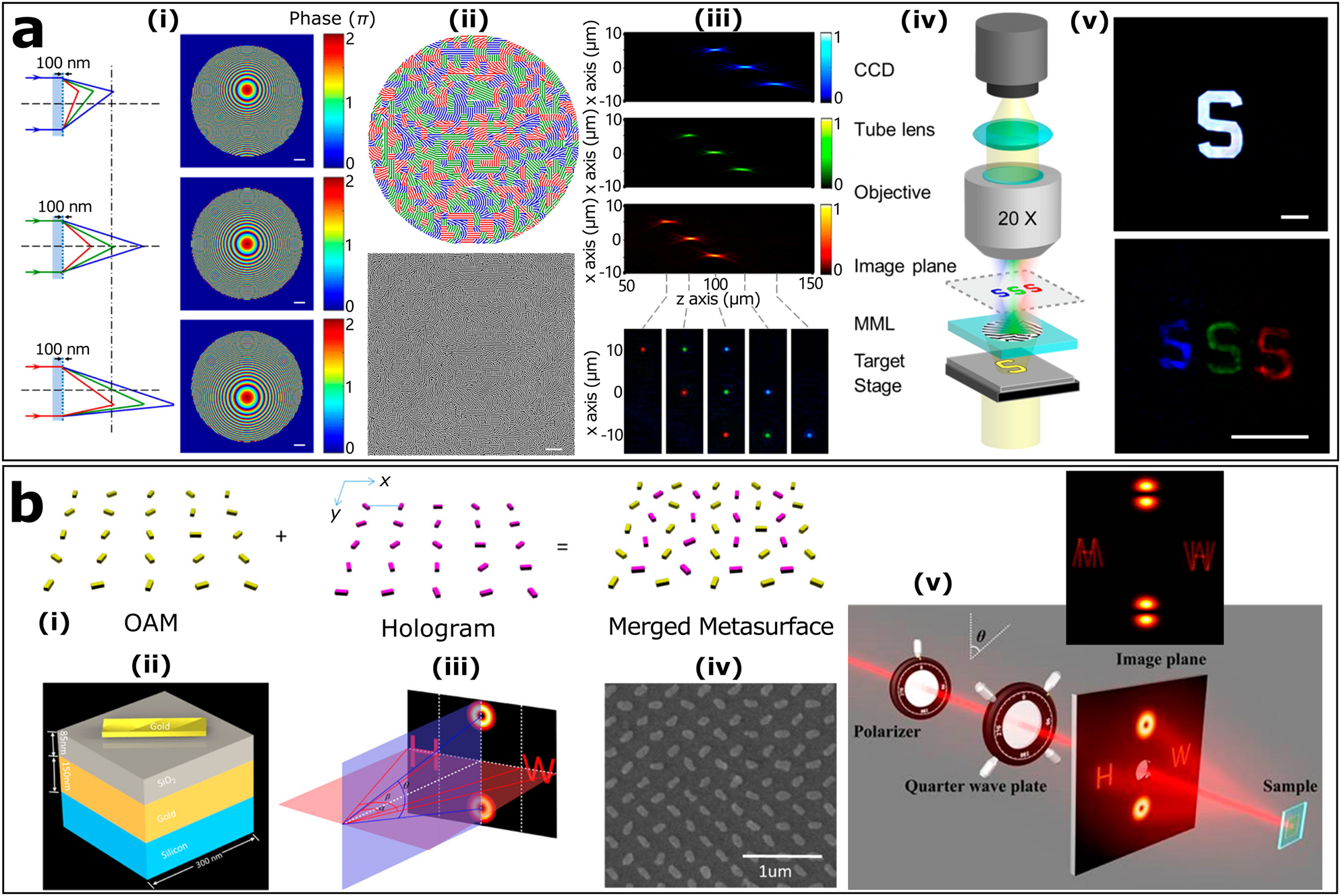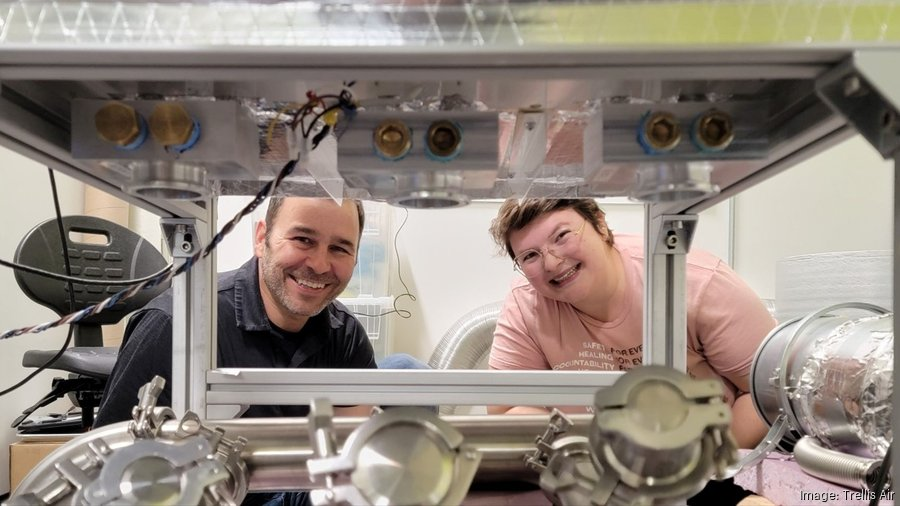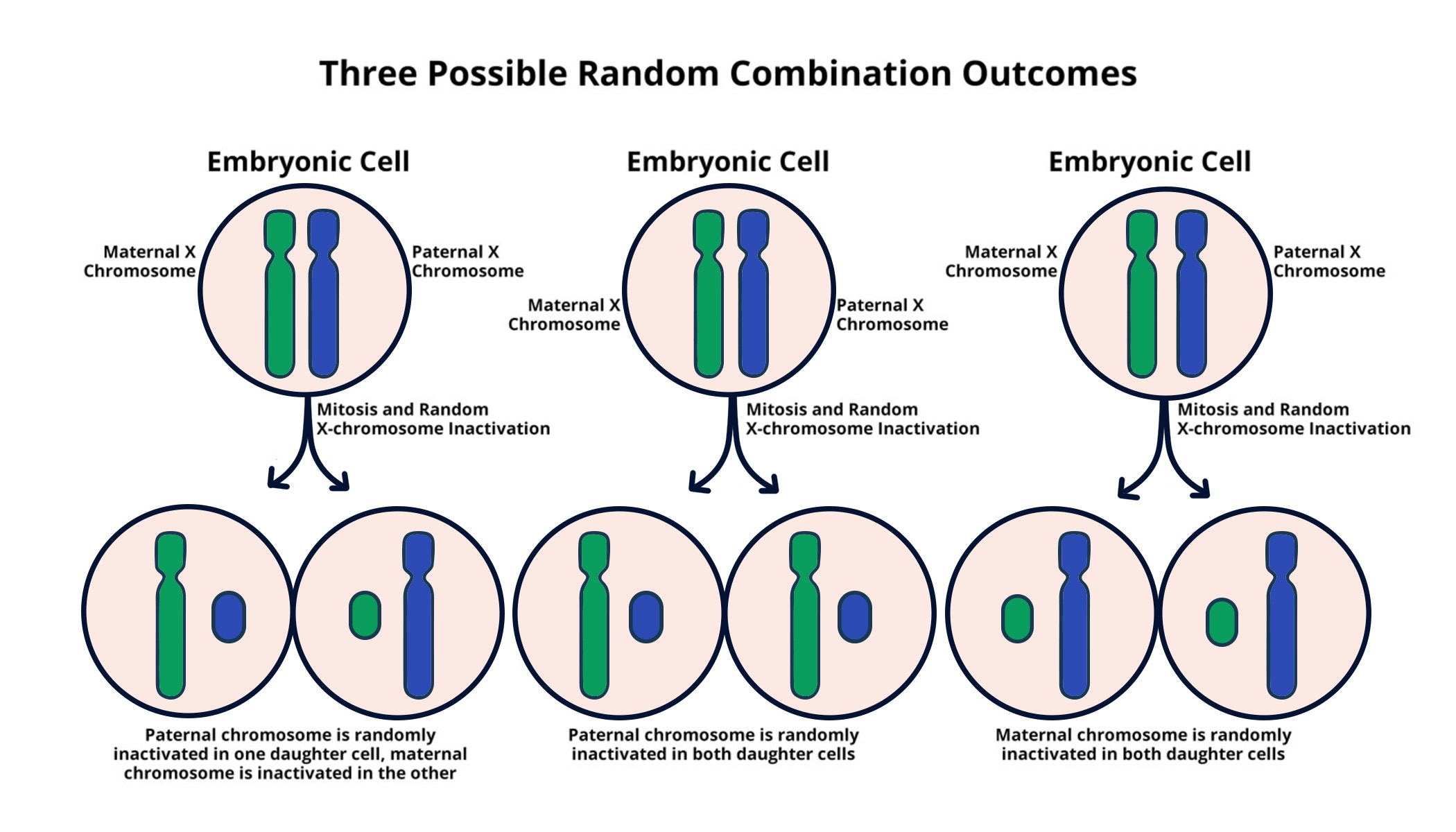
Light-Focusing Metasurfaces Revolutionizing Consumer Tech
Light-focusing metasurfaces represent a groundbreaking leap in optical technology, revolutionizing the way devices interact with light. Unlike traditional lenses made from glass or plastic, these innovative mini-lenses utilize a flat surface embedded with nanostructures to manipulate light with remarkable precision. Emerging from cutting-edge semiconductor technology, light-focusing metasurfaces are becoming integral to consumer electronics, including smartphones and tablets, enhancing their capabilities while minimizing size and cost. Devices equipped with these metasurfaces are increasingly being adopted in applications such as augmented reality and advanced imaging, including sophisticated polarization cameras. As the technology evolves, the potential for integrating light-focusing metasurfaces into everyday products continues to expand, paving the way for a new era of optical solutions.
Metasurfaces designed to focus light have opened up exciting avenues in the realm of optical engineering. Often referred to as mini-lenses, these flat lenses leverage intricate nanostructured surfaces to achieve superior light manipulation, making them a compelling alternative to conventional optical components. Powered by advancements in semiconductor fabrication, these new-age lenses are finding a place in modern consumer devices, enhancing user experiences in immersive environments like augmented reality. Their ability to conduct precision light management is particularly valuable in technologies such as polarization cameras, which can go beyond traditional imaging capabilities. As research continues, the redefined landscape of optoelectronics stands to benefit vastly from these innovative light-focusing metasurfaces.
Understanding Light-Focusing Metasurfaces
Light-focusing metasurfaces represent a transformative development in optics, enabling unprecedented control over light manipulation at a microscopic level. Developed initially at Harvard by pioneers like Federico Capasso and Rob Devlin, these innovative devices leverage nanostructured surfaces that effectively bend light, akin to traditional optical lenses but without the bulk. The ability to efficiently focus light using a flat surface not only reduces size but also minimizes production costs, making them an attractive solution for large-scale manufacturing processes in the semiconductor industry.
The role of light-focusing metasurfaces extends beyond mere lens replacement; they facilitate the integration of advanced optical functionalities into compact devices, revolutionizing consumer electronics. For instance, by embedding these metasurfaces into devices like smartphones and tablets, manufacturers can allocate precious space to other innovative features, allowing for sleeker designs and enhanced performance while reducing overall costs. This is particularly significant in the context of augmented reality applications, where precision optical components are essential for delivering immersive user experiences.
The Impact of Mini-Lenses on Consumer Electronics
Mini-lenses, powered by the advancements in light-focusing metasurfaces, are setting a new standard in consumer electronics. As companies like Metalenz ramp up production, the incorporation of these ultra-compact lenses into everyday devices is rapidly becoming the norm. Unlike traditional lenses that can be cumbersome and costly, mini-lenses offer a lightweight and cost-effective solution for manufacturers, enabling the production of high-functioning electronic devices with enhanced imaging capabilities.
The implications of integrating mini-lenses are vast; they allow for improved features in smartphones, facilitating better camera capabilities and enhanced features for applications such as facial recognition and 3D mapping. Furthermore, improved depth perception provided by these mini-lenses can significantly enhance the functionality of augmented reality interfaces, making them more accessible and user-friendly for the mainstream market.
Revolutionizing Semiconductor Technology
The emergence of mini-lenses and light-focusing metasurfaces signifies a shift in the semiconductor technology landscape. Traditional optics, characterized by bulky glass and complex manufacturing processes, can now be streamlined through the application of these advanced metasurfaces. This simplification in design and production has the potential to not only accelerate the manufacturing process but also yield higher-quality optical components that are essential for modern consumer electronics.
This disruptive technology is not just about enhancing existing products; it opens up avenues for new industry applications. From smartphone cameras that can produce stunning images in low light to new augmented reality devices that create incredibly realistic overlays, the versatility of semiconductor technology is largely being driven by innovations in lens design. Companies that adapt to this shift will be well-positioned to lead the next wave of technological advancement in consumer electronics.
Applications of Polarization Cameras in Consumer Electronics
Polarization cameras represent a cutting-edge innovation in visual technology, leveraging specific light properties to enhance imaging capabilities. Unlike conventional cameras, which merely capture light intensity, polarization cameras measure the direction of light waves, providing valuable additional information, particularly useful in applications like facial recognition and environmental monitoring. The compact design of Metalenz’s polarization metasurface opens the door for this technology to be integrated into everyday electronic devices at a fraction of the traditional cost.
The ability to utilize miniaturized polarization cameras could lead to breakthroughs in personal security and health monitoring. For example, these devices can identify skin conditions or other health markers based on unique polarization signatures, paving the way for expanded applications in medical diagnostics. Moreover, the integration of such capabilities within consumer electronics justifies the necessity of investing in smaller, more efficient optical components, as this will be fundamental for the success of emerging technologies.
The Future of Augmented Reality Technology
As augmented reality (AR) continues to evolve, the role of light-focusing metasurfaces and mini-lenses is expected to be critical. These innovations are essential for delivering high-quality visuals in AR applications, as they allow for the optical miniaturization that enhances user immersion without sacrificing functionality. The seamless integration of metasurfaces into small devices could redefine how users interact with both physical and digital environments, enabling more intuitive interfaces and more sophisticated experiences.
With companies like Metalenz positioned at the forefront of AR technology, the next generation of consumer electronics will likely include features that were previously confined to science fiction. Enhanced depth perception, improved visual clarity, and reduced device size will be key attributes that set future AR devices apart. As the technology matures and the cost of production decreases, it’s anticipated that AR will migrate from niche markets to become a mainstream feature integrated into everyday gadgets.
Challenges in Mass Production of Metasurfaces
Despite the promising future of light-focusing metasurfaces, there are still significant challenges associated with their mass production. Ensuring consistency and quality across millions of mini-lenses while maintaining cost efficiency is complex due to the intricate processes involved in nanofabrication. The need for innovative solutions in manufacturing techniques is paramount, requiring deeper collaborations between academia and industry to streamline production methods.
Moreover, competition within the semiconductor industry pushes for rapid advancements, meaning that companies must constantly innovate to stay ahead. As manufacturers race to incorporate metasurface technologies, understanding the nuances of their production and deployment becomes critical. By investing in research and development, firms can continue to optimize the performance of these devices while ensuring scalability in production.
Collaboration Between Academia and Startups
The partnership between academic institutions and startups like Metalenz exemplifies the power of collaborative innovation. The initial research conducted in university settings lays the groundwork for transformative technologies, while the entrepreneurial spirit within startups accelerates the transition of research into practical applications. Such collaborations enhance product development cycles, leveraging the expertise of researchers and the agility of startups to create groundbreaking solutions.
Moreover, academic partnerships not only provide startups access to cutting-edge research but also foster an environment where novel ideas can flourish. By harnessing the knowledge available within university labs, startups can develop products that are not only impactful but also enhance quality of life. This synergy is crucial for driving forward advancements in sectors like consumer electronics and augmented reality, where continual innovation is essential for remaining competitive.
The Role of Consumer Demand in Technology Innovation
Consumer demand drives the evolution of technology, necessitating that manufacturers consistently look for ways to innovate. With the growing interest in miniaturized devices that enhance portability and usability, companies are compelled to invest in advanced technologies like light-focusing metasurfaces to meet these needs. Understanding market trends and consumer preferences allows tech firms to better align their development efforts, thus capitalizing on emerging opportunities.
As technology becomes increasingly integrated into daily life, the expectation for more powerful, efficient, and compact devices grows. This consumer pressure not only inspires developments in product design but also creates a cycle where demand fuels technical advancement. Hence, the interplay between consumer expectations and innovative technology is crucial; understanding this dynamic will determine which companies thrive in a competitive landscape.
The Significance of Innovation in Optical Research
Innovation in optical research has profoundly impacted various aspects of daily life, from communication to entertainment. The development of light-focusing metasurfaces represents a significant leap in optical technology, allowing for the reimagining of traditional lens design and function. By pushing the boundaries of what is possible in the field of optics, researchers are paving the way for future advancements that could redefine imaging technologies.
As the pace of research accelerates, the significance of fostering an innovative culture within the optical sciences becomes paramount. As evidenced by the contributions made within the Capasso lab at Harvard, engaging multidisciplinary teams can lead to the generation of groundbreaking ideas and products. The continuous exploration of new concepts in optical technology ensures that practical applications remain at the forefront of consumer products, ultimately enhancing the user experience.
Frequently Asked Questions
What are light-focusing metasurfaces and how do they work?
Light-focusing metasurfaces are advanced optical devices that manipulate light using small nanostructures on a millimeter-thin wafer. These mini-lenses function by bending light in ways similar to traditional lenses but in a much more compact and efficient manner, making them suitable for use in various consumer electronics.
How are mini-lenses made using semiconductor technology?
Mini-lenses, or light-focusing metasurfaces, are fabricated using semiconductor technology that involves creating tiny pillars or nanostructures on a substrate. This process allows for the mass production of these lenses, making them more accessible for integration into consumer electronics at a lower cost.
What applications do light-focusing metasurfaces have in consumer electronics?
Light-focusing metasurfaces are currently integrated into several consumer electronic devices, such as smartphones and tablets, where they enhance camera functionality, improve depth sensing for features like facial recognition, and enable advanced augmented reality applications.
Can light-focusing metasurfaces be used in photonic devices like polarization cameras?
Yes, light-focusing metasurfaces are being developed for innovative applications in polarization cameras. These compact metasurfaces can significantly reduce the size and cost of polarization cameras, allowing for their application in more devices and broader contexts, including security and health monitoring.
What advantages do light-focusing metasurfaces offer over traditional lenses?
Light-focusing metasurfaces offer numerous advantages over traditional lenses, including their smaller size, lower manufacturing costs, and capabilities for precise light manipulation. This technology enables the design of sleeker consumer electronic devices while improving optical performance.
What is the significance of the collaboration at Metalenz regarding light-focusing metasurfaces?
The collaboration at Metalenz, particularly with Federico Capasso’s lab, ensures that the company continuously benefits from groundbreaking research in optics. This partnership enables the development of innovative products like Polar ID, which leverages light polarization for enhanced security features in consumer electronics.
How do light-focusing metasurfaces contribute to augmented reality technology?
Light-focusing metasurfaces enhance augmented reality technology by enabling devices to achieve greater depth perception and better integration of digital overlays with real-world environments. Their ability to manipulate light aids in creating more immersive AR experiences.
What is Polar ID and how does it utilize light-focusing metasurfaces?
Polar ID is an innovative application of light-focusing metasurfaces that uses polarization techniques to enhance security in smartphones. By measuring unique polarization signatures, it provides a low-cost solution for identity verification, compared to traditional polarization cameras.
Are there any limitations to the use of light-focusing metasurfaces?
While light-focusing metasurfaces are revolutionary, they may have limitations in terms of operational efficiency and compatibility with existing optical systems. Ongoing research aims to optimize these properties to expand their applications in various fields.
| Key Points | Details |
|---|---|
| Rob Devlin’s Innovation | Developed a mini-lens during his Ph.D. at Harvard, now produced by Metalenz. |
| Mass Production | Over 100 million light-focusing metasurfaces integrated into consumer devices. |
| Applications | Used in devices like iPad, Samsung Galaxy S23 Ultra, and Google Pixel 8 Pro. |
| Revolutionizing Optics | Aims to replace bulky traditional lenses in consumer electronics. |
| Polar ID Technology | Offers unique security features using light polarization for smartphones. |
| Future Prospects | Plans to enhance existing products and explore new applications for metasurfaces. |
Summary
Light-focusing metasurfaces represent a groundbreaking innovation in optics, offering compact and cost-effective solutions for various consumer electronics. Originating from advanced research at Harvard, these devices have now reached mass production levels, significantly impacting the technology market by integrating into popular gadgets. The potential of light-focusing metasurfaces goes beyond traditional applications, paving the way for enhancements in device capabilities, improved security features, and exciting future developments in imaging and sensory technologies.









